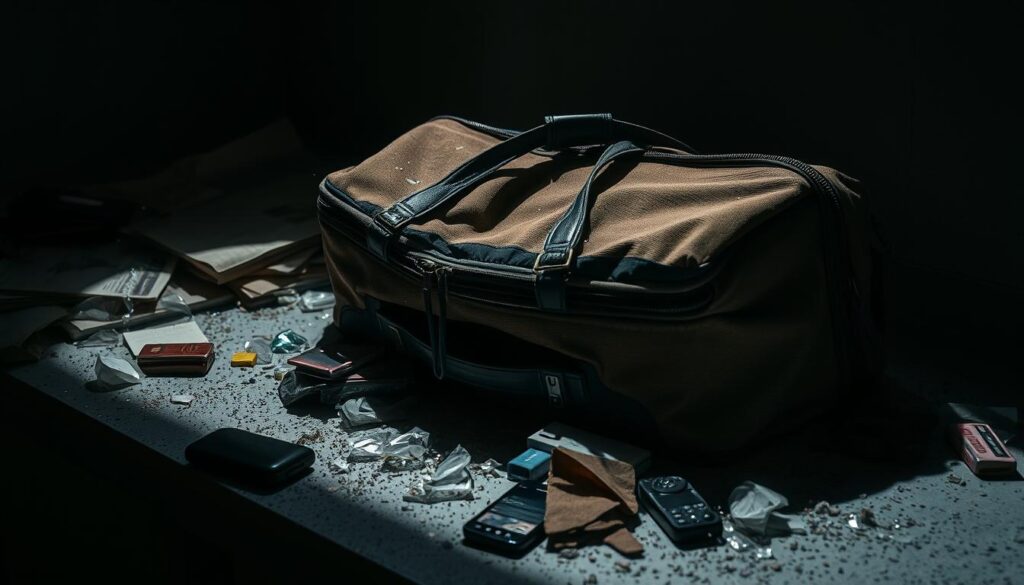What to Do If Your Bag Gets Damaged in Transit
Traveling can be a stressful experience, especially when your luggage doesn’t arrive in the same condition as when you checked it in. A damaged bag can be a significant inconvenience, but knowing how to handle the situation can make a big difference.
According to airline industry sources, if your bag is damaged during transit, it’s crucial to report the issue to the airline immediately. This prompt action can help ensure that you receive compensation or a suitable replacement for your damaged luggage.
In this article, we’ll guide you through the steps to take when your bag is damaged during airline travel, helping you navigate the process with ease and minimizing the disruption to your travel plans.
Understanding Baggage Damage: Types and Common Causes
Traveling can be stressful, and receiving a damaged bag in transit adds to that stress, but knowledge is power. Understanding baggage damage, its types, and common causes can significantly ease the process of dealing with the aftermath.
Baggage damage can range from minor cosmetic issues to significant structural problems that render the luggage unusable. Types of baggage damage include cracked wheels, torn fabric, broken handles, and damaged straps. The common causes often involve mishandling during transit, such as being thrown or dragged, and sometimes, it’s due to airline liability in handling the luggage.

It’s essential to note that airlines are generally liable for damage to wheels, handles, and straps if it’s proven that the damage occurred during transit due to their handling. However, damages caused by improper packing or wear and tear are typically not covered under airline liability.
Understanding these nuances can help travelers navigate the claims process more effectively. By recognizing the types and common causes of baggage damage, individuals can better document their claims and seek appropriate compensation.
Immediate Steps to Take When You Discover Damaged Luggage
If your luggage is damaged during transit, knowing the right steps to take is vital. Acting quickly can significantly impact the success of your claim.
Taking Effective Photos and Videos
Documenting the damage is a critical step. Take clear, well-lit photos of the damaged luggage from multiple angles. This visual evidence will help support your claim. Additionally, consider taking a video that pans over the damage, providing a comprehensive view.

Creating a detailed inventory of the damaged items is essential. List each item, describing the extent of the damage. This inventory will serve as crucial evidence when filing your claim. Be as detailed as possible, including any receipts or proof of purchase for the items.
By taking these immediate steps, you can ensure that you have the necessary documentation to support your claim for damaged luggage. This proactive approach will help streamline the claims process, making it less stressful and more efficient.
What to Do If Your Bag Gets Damaged in Transit: Filing Claims
When your luggage is damaged in transit, you need to understand the process of filing a claim. This process can vary between airlines, but there are general steps you can follow to ensure a smooth experience.
The first step in filing a claim is to notify the airline about the damage. Most airlines have a specific timeframe within which you must report the damage, so it’s essential to act quickly. You can usually find this information on the airline’s website or by contacting their customer service department.
Gathering necessary documentation is a critical part of the claims process. You will typically need to provide proof of the damage, which can include photographs of the damaged luggage and its contents. Additionally, you may need to submit receipts for any items you need to replace or repair due to the damage.
Filling out the claim form accurately is also crucial. The form will usually ask for details about your flight, the damage to your luggage, and the value of the items that were damaged. Be sure to fill out this form carefully and include all required documentation to avoid delays.
Submitting your claim can often be done online, but some airlines may require you to mail the form or visit their office in person. Check with your airline to determine their preferred method.
After submitting your claim, the airline will review it and determine the appropriate compensation based on their policies and the extent of the damage. It’s essential to be patient and follow up if you haven’t received a response within the timeframe the airline specified.
Understanding the airline’s procedures and being prepared with the necessary documentation can make the process of filing a claim for a damaged bag in transit much less stressful.
Understanding Your Rights and Compensation Options
Knowing your rights and compensation options can make a significant difference if your luggage is damaged during travel. The Department of Transportation (DOT) regulates airlines and provides guidelines on passenger rights, including those related to damaged baggage.
Airline Liability Airlines are liable for damages to checked baggage, but there are limits to this liability. For US domestic flights, the maximum liability is $3,800.

The DOT regulations are in place to protect passengers. Understanding these regulations can help you navigate the process of claiming compensation for damaged luggage. It’s also important to know that airlines have their own policies regarding damaged baggage, which may offer additional compensation options.
Compensation Process
To claim compensation, you typically need to report the damage to the airline within a specified timeframe. Keeping records of your luggage, including receipts for the bags and any valuable items inside, can be helpful during the claims process.
Maximizing Your Compensation To maximize your compensation, it’s crucial to understand what you’re entitled to under the airline’s policy and DOT regulations. This may include reimbursement for the damaged items or the value of the luggage itself.
Alternative Compensation Routes
Damaged bags can be frustrating, but there are several alternative compensation options available to travelers. Beyond filing a claim with the airline, passengers can explore other avenues to recover their losses.
One such option is credit card coverage. Many credit card companies offer travel insurance that includes coverage for damaged or lost luggage. If you paid for your flight using a credit card that offers this benefit, you may be able to file a claim directly with the credit card company. This can often be a more straightforward process than dealing with the airline.

Another alternative is baggage insurance. Some insurance providers offer specialized policies that cover luggage against damage or loss during travel. These policies can provide additional peace of mind, especially for travelers carrying valuable items.
Understanding these alternative compensation routes can help you navigate the process more effectively. Whether through credit card coverage or baggage insurance, being aware of your options can make a significant difference in recovering from the inconvenience of a damaged bag.
Conclusion: Preventing Future Baggage Damage
To minimize the risk of baggage damage, consider implementing a few simple strategies. Using a sturdy carry-on bag can significantly reduce the likelihood of damage, as it is less prone to being mishandled.
Tracking your luggage is another effective way to prevent loss or damage. Many airlines offer tracking services, and there are also third-party devices available that can be used to monitor your bag’s location.
By understanding what to do if your bag gets damaged in transit and taking proactive steps to prevent damage, you can ensure a smoother travel experience. Check with your airline for specific baggage handling requirements and take the necessary precautions to protect your belongings.
